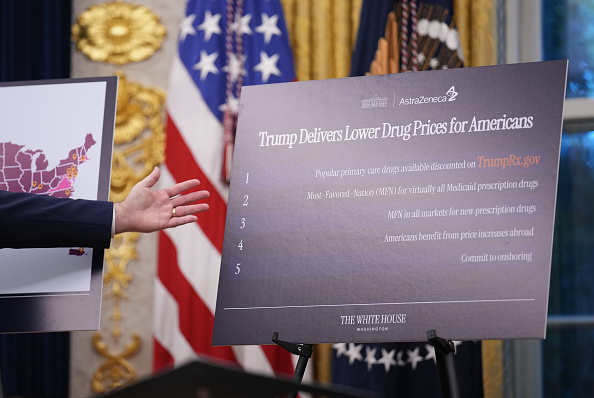Maine legislators are considering a proposal that could dramatically change how patients search for health care services. The new proposal introduces a new model for health care known as “Right to Shop.” Right to Shop has three main components: a requirement for insurers to provide consumers with a notice of their right to shop for lower-cost services; accurate information on the cost of services among different providers, along with a platform for shopping services; and a requirement for insurers to share the savings generated when a consumer uses this information to find lower-cost services. Maine’s Right to Shop bill would require insurers to provide a consumer with 50 percent of the savings once savings exceed $50.
In a recent article in Health Care News, Joel Allumbaugh, senior fellow at the Foundation for Government Accountability, argues these notices are needed because most consumers are unaware of their own power to shop for a better health care deal. “Health care is one area where we have not typically shopped, nor do many of us know that we can,” said Allumbaugh told HCN. “It is important that consumer be made aware to help break inertia and habits. Ninety-eight percent of health insurers offer transparency tools, yet less than 2 percent of policyholders use them. They don’t think of health care as something they have the power to choose and direct. This program will drive down health care costs if enough consumers start shopping. The notice is designed to help raise awareness, to ensure the intent of the legislation – to lower health care costs – actually happens.”
Right to Shop has seen some success in bringing down costs. In a recent article in Forbes, Josh Archambault and Nic Horton point to a program in New Hampshire as an example of how Right to Shop can produce positive results. In New Hampshire, Anthem Blue Cross Blue Shield set up a Right to Shop-style system for state employees, which Archambault and Horton say produced $12 million in savings, with over $1 million paid out to patients as rewards.
One valid criticism of Right to Shop is it imposes mandates on hospitals and insurers, distorting the free market. These include requiring providers to inform patients of their right to shop around, requiring providers and insurers to maintain up-to-date pricing, and requiring insurers to reward savvy shoppers. Supporters argue increasing patient savings and choice is worth the mandates.
While the shared savings component of Right to Shop will create some costs for insurers, improving transparency benefits everyone. Access to transparent health care prices remains elusive for most consumers, who are often insulated from the billing system through ineffective third-party payment systems that leave patients unaware of the cost of the treatments they receive. Patients are not given an incentive to shop around; they pay the same copay regardless of the services they choose and are not penalized for ineffective choices. Extra costs are passed on to the insurer, and the overall cost of premiums increases along with the cost of care. Right to Shop’s transparency requirements address many of these concerns.
States have been slow to embrace health care price transparency. A recent report card from the Health Care Incentives Improvement Institute (HCI3) and Catalyst for Payment Reform’s (CPR) examined state price transparency laws and found very little progress being made by most states to improve health care price transparency. The report card found “45 of 50 states fail when it comes to disclosing health care price information to the public.”
Price transparency promotes competition and helps ensure product quality. When consumers are able to actively shop and compare prices, market pressures encourage providers to produce a more affordable, higher quality product or risk losing out to their competitors. While Right to Shop is not a silver bullet and attention does need to be given to the cost of implementation, Right to Shop takes several positive steps toward encouraging active price shopping and competition. It deserves serious consideration from lawmakers across the country.
The following documents examine health care price transparency and Right to Shop in greater detail.
Right To Shop: The Next Big Thing in Health Care
https://www.forbes.com/sites/theapothecary/2016/08/05/right-to-shop-the-next-big-thing-in-health-care/#62d2156d4f60
In this Forbes article, Josh Archambault and Nic Horton explain how Right to Shop works and how it could revolutionize health care shopping. “Right To Shop is a commonsense approach to addressing exploding health care costs. It’s simple, flexible, and, best of all, it works. By extending these concepts to all insured consumers, Right To Shop will bring much-needed relief to patients,” Archambault and Horton wrote.
A Common-Sense Health Care Solution
http://mainepolicy.org/a-common-sense-health-care-solution/
Patrick Marvin of the Maine Heritage Policy Center examines a previous version of Right to Shop and the potential benefits for Mainers. “This bill would increase transparency, protect the free market, allow consumers and patients to place downward pressure on health care costs, and push for affordable and economical alternatives. The health and wellness of a patient should always be the primary concern in a health care environment. But economics and cost-effectiveness must also be taken into consideration, and patients should not have to settle for expensive procedures without having any other options,” wrote Marvin.
Ten Principles of Health Care Policy
http://heartland.org/policy-documents/ten-principles-health-care-policy
This pamphlet in The Heartland Institute’s Legislative Principles series describes the proper role of government in financing and delivering health care and provides reform suggestions to remedy current health care policy problems.
Price Transparency in Health Care: Will it Bend the Cost Curve?
http://dailysignal.com/2010/06/28/price-transparency-in-health-care-will-it-bend-the-cost-curve/
Kathryn Nix of writes in the Daily Signal about a new trend toward greater price transparency in medicine due to new companies aiming to make health care price more available. “Lack of transparency regarding pricing of medical services has often been attributed as one of the factors contributing to skyrocketing spending in the health care system, a concern which drew considerable attention during the recent debate over health care reform.”
Transparency in Health Care: What Consumers Need to Know
http://www.heritage.org/research/lecture/transparency-in-health-care-what-consumers-need-to-know
In this 2007 lecture from the Heritage Foundation, the Honorable Alex M. Azar II, Thomas P. Miller, David B. Kendall, and Walton Francis discuss transparency in health care and how it affects choice and pricing. “In a free market, where consumers make their own decisions, technology and techniques rapidly improve. Quality rises and prices drop. In short, freedom fosters prosperity.”
Empowering Patients as Key Decision Makers in the Face of Rising Health Care Costs
http://www.heritage.org/research/reports/2011/12/empowering-patients-as-key-decision-makers
The current trend of rapidly rising health care costs is unsustainable. Many proposed reforms to curb spending rely on some type of rationing imposed by an unaccountable government body. A better alternative would be to allow individual consumers to make their own decisions about care, including the self-rationing of medical services, based on cost and their own desires. Such a policy is compatible with American values of limited government and individual liberty and responsibility. State and federal policymakers should adopt measures to facilitate personal control of health care decisions.
Transparency and Disclosure of Health Costs and Provider Payments: State Actions
http://www.ncsl.org/research/health/transparency-and-disclosure-health-costs.aspx
This report from the National Conference of State Legislatures describes a number of state actions over the past two decades which promote efforts to improve transparency in health charges and provider payments.
Study: Price Transparency Benefits Consumers
http://news.heartland.org/newspaper-article/2015/01/16/study-price-transparency-benefits-consumers
Kenneth Artz writes in the Heartlander about a new study from the Journal of the American Medical Association which found as price transparency lowered total claims payments for common medical services.
Healthcare Prices for Common Procedures Are Hard for Consumers to Obtain
http://pioneerinstitute.org/healthcare/national-survey-finds-limited-access-to-price-estimates-for-routine-hospital-procedure/
A survey of 54 hospitals in six metropolitan areas across the United States reveals consumers seeking a price estimate for a routine medical procedure face a difficult and frustrating task, despite price transparency provisions in the Affordable Care Act and five of the six states, according to this Pioneer Institute Policy Brief.
Nothing in this Research & Commentary is intended to influence the passage of legislation, and it does not necessarily represent the views of The Heartland Institute. For further information on this subject, visit Health Care News, The Heartland Institute’s website, and PolicyBot, Heartland’s free online research database.
If you have any questions about this issue or The Heartland Institute’s website, contact John Nothdurft, The Heartland Institute’s government relations director, at [email protected] or 312/377-4000.




